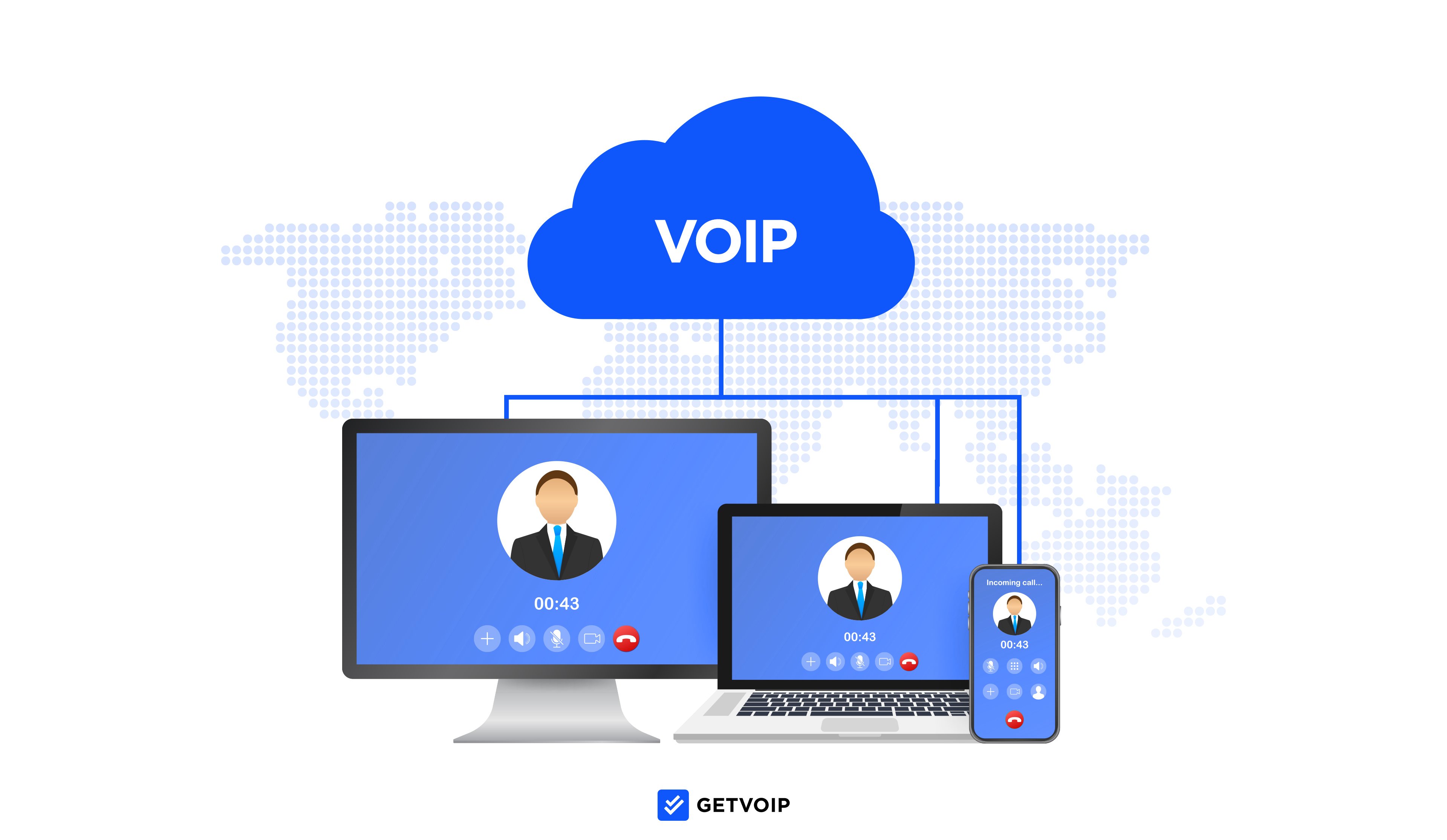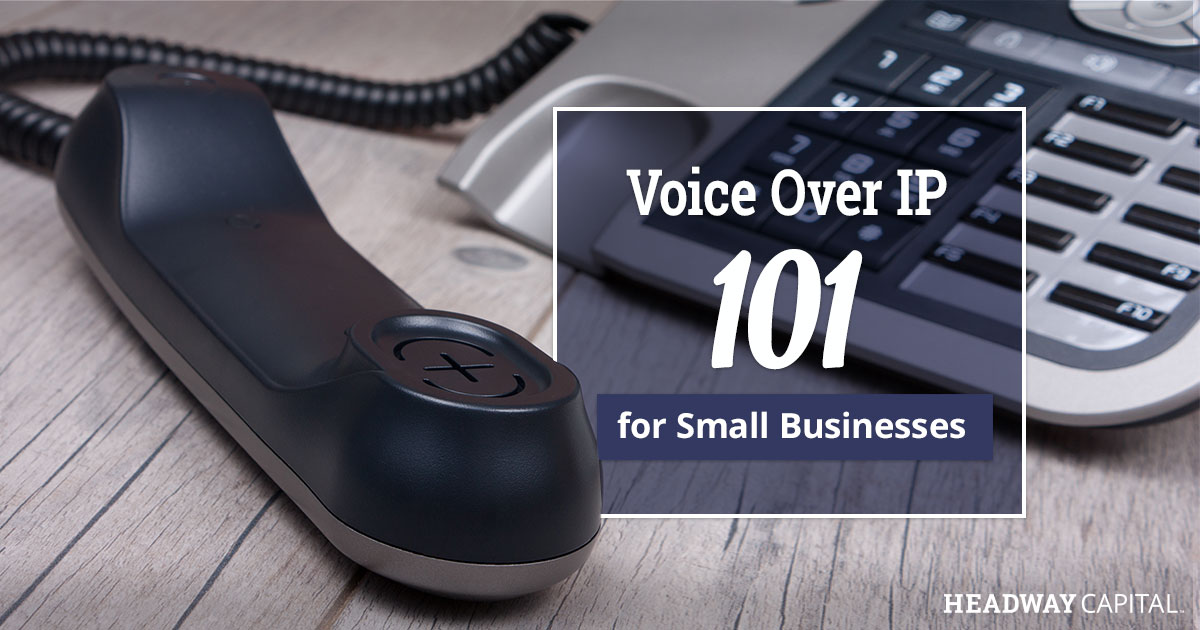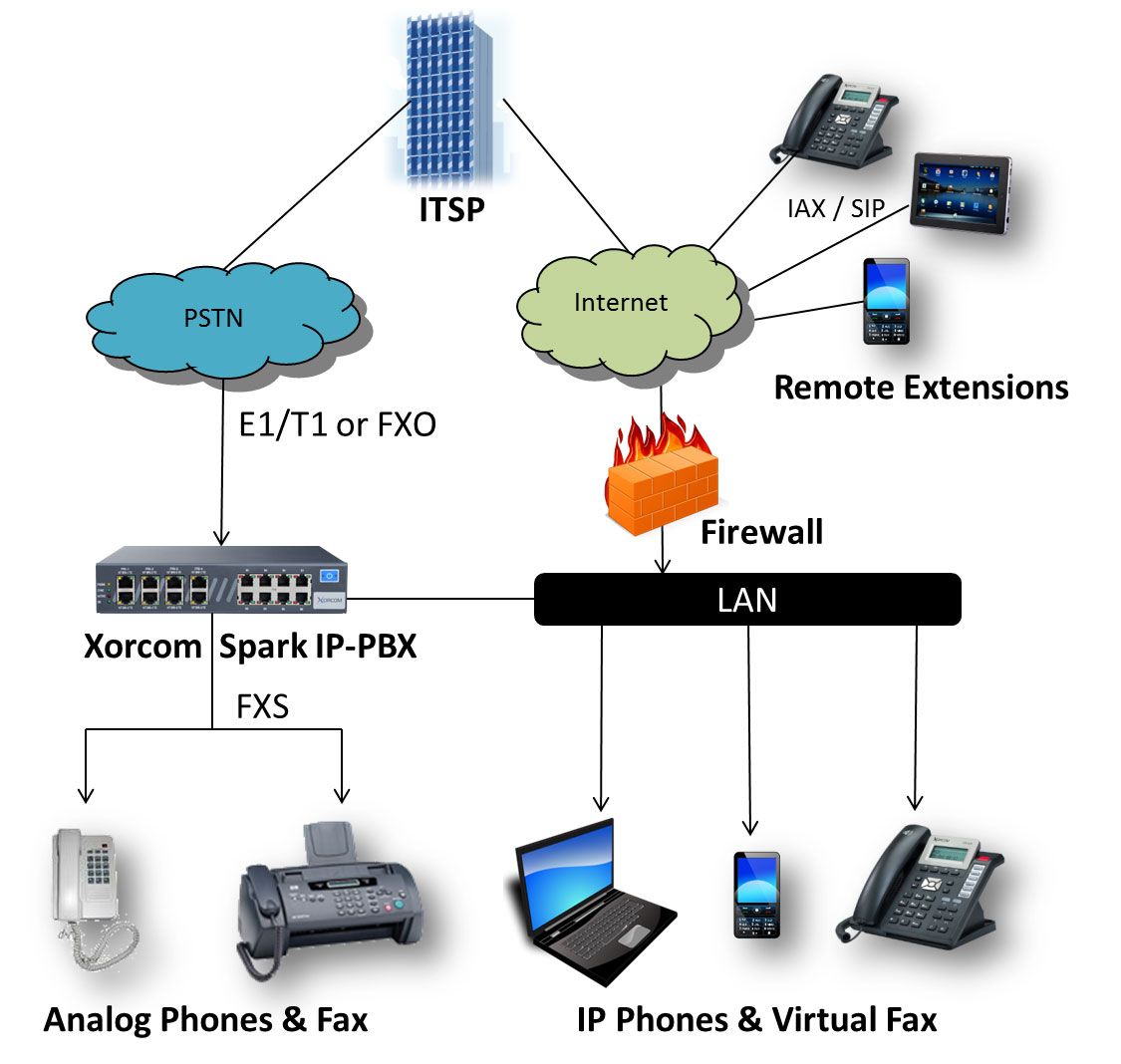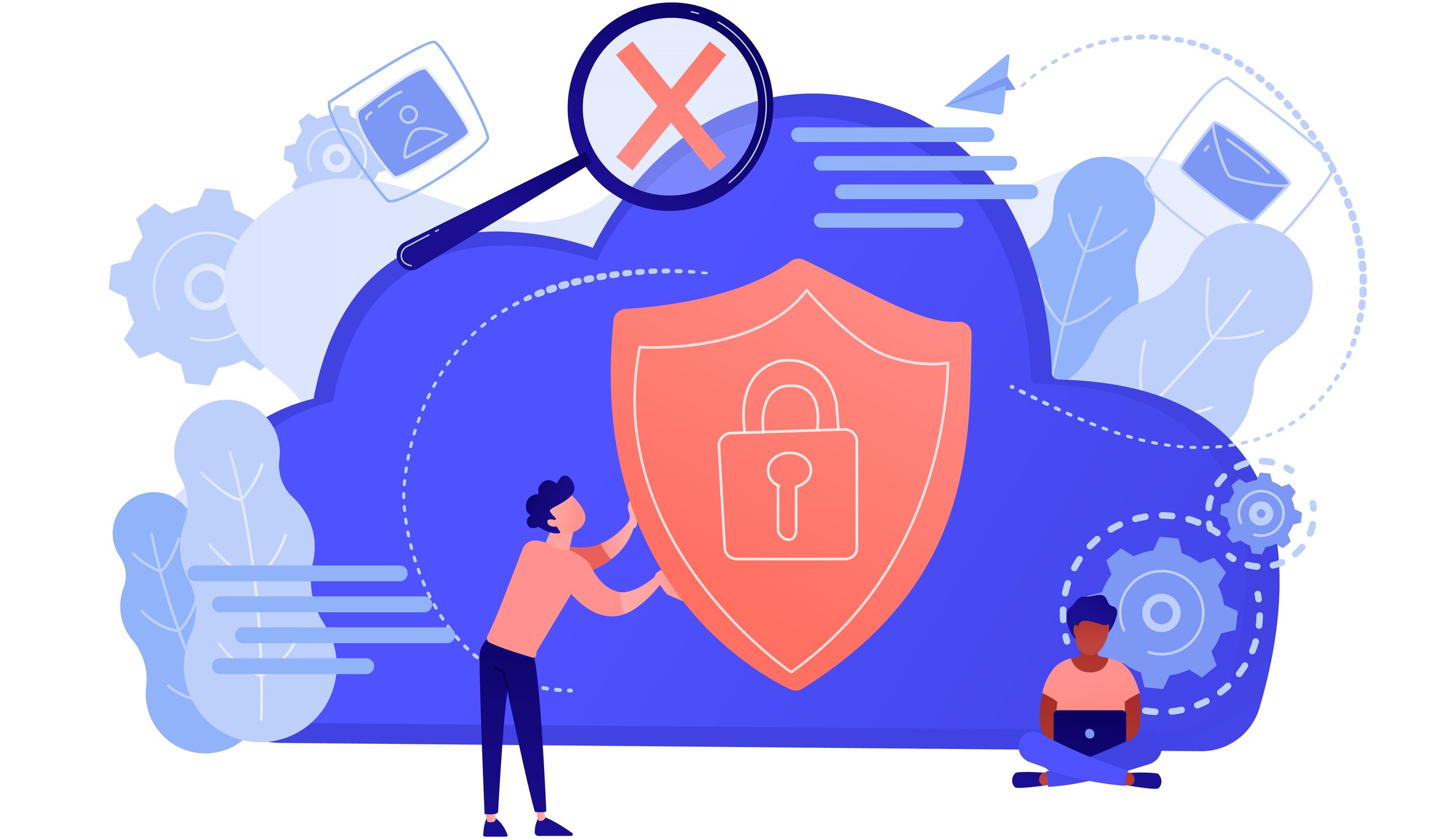VoIP in the Cloud: A Modern Approach to Communication
In today’s fast-paced business environment, staying connected is crucial for success. Voice over IP (VoIP) solutions in the cloud have emerged as a modern approach to communication, offering numerous advantages over traditional on-premises systems. Scalability, cost-effectiveness, and flexibility are just a few of the benefits that have attracted businesses of all sizes to adopt cloud-based VoIP systems.
Some of the leading VoIP providers in the industry include RingCentral, 8×8, and Nextiva. These companies have developed robust, feature-rich platforms that cater to the diverse needs of businesses. By harnessing the power of the cloud, these providers enable seamless communication through voice, video, and messaging services, ensuring that teams remain connected and productive, whether they are working in the office or remotely.

How VoIP in the Cloud Works: Breaking Down the Technology
At the core of Voice over IP (VoIP) solutions in the cloud lies a sophisticated yet intuitive technology infrastructure. To help you better understand this technology, let’s break it down into simpler terms.
At the heart of VoIP in the cloud is the session initiation protocol (SIP). SIP is a signaling protocol used to establish, maintain, and terminate real-time sessions between two or more communication devices, such as phones or computers. SIP enables the efficient management of voice, video, and messaging services, ensuring seamless communication between users.
Media gateways serve as the bridge between traditional telephone networks and VoIP systems. These devices convert analog audio signals into digital data packets, allowing for the transmission of voice and video over the internet. By connecting to the public switched telephone network (PSTN), media gateways enable VoIP users to make and receive calls from landlines and mobile phones.
Softphones are software-based communication applications that allow users to make and receive calls using their computers or mobile devices. Softphones typically include features such as call handling, voicemail, and video conferencing, providing users with a versatile and feature-rich communication experience. By leveraging the cloud, softphones enable users to access their communication tools from anywhere, at any time, without the need for expensive hardware or on-premises infrastructure.
To provide a simple analogy, think of VoIP in the cloud as a symphony orchestra. SIP acts as the conductor, coordinating and managing the various instruments (communication devices) to ensure they play in harmony. Media gateways serve as the translators, converting the unique languages of each instrument (analog audio signals) into a common language (digital data packets) that the orchestra can understand. Finally, softphones represent the musicians, providing the voice and melody that brings the symphony to life.

Key Features to Consider in a Voice over IP (VoIP) Solutions in the Cloud
When selecting a Voice over IP (VoIP) solution in the cloud, businesses should consider several essential features to ensure seamless communication and optimal user experience. Here are some key features to look for:
- Call routing: A robust call routing system enables businesses to direct incoming calls to the appropriate extension or department, ensuring that customers are connected to the right person. This feature can include time-based routing, which allows businesses to route calls to different numbers or voicemail boxes based on the time of day or day of the week.
- Auto-attendants: Auto-attendants serve as virtual receptionists, greeting callers and providing them with a menu of options to choose from. This feature can help businesses manage high call volumes and ensure that callers are directed to the appropriate destination without the need for human intervention.
- Voicemail-to-email: This feature allows users to receive voicemail messages as audio files attached to emails. This feature can help businesses improve their communication workflow, as users can access their voicemails from anywhere, at any time, without the need to dial into their voicemail boxes.
- Mobile apps: Mobile apps enable users to make and receive calls, check voicemail, and manage their communication settings from their mobile devices. This feature can help businesses improve their communication flexibility, as users can stay connected even when they are away from their desks.
- User-friendly interfaces: A user-friendly interface can help businesses improve their communication efficiency, as users can quickly and easily access the features and settings they need. Look for a VoIP solution that offers an intuitive and easy-to-navigate interface, with clear labels and instructions.
- Reliable customer support: Reliable customer support can help businesses ensure that their communication system is always up and running. Look for a VoIP solution that offers 24/7 customer support, with knowledgeable and responsive support staff who can help troubleshoot any issues that may arise.
By considering these key features, businesses can select a Voice over IP (VoIP) solution in the cloud that meets their communication needs and provides a seamless and user-friendly experience for their employees and customers.

Assessing Your Business Needs: A Step-by-Step Guide to Choosing Voice over IP (VoIP) Solutions in the Cloud
When selecting a Voice over IP (VoIP) solution in the cloud, businesses must consider their communication needs to ensure they choose a system that meets their requirements. Here is a step-by-step guide to help businesses determine their communication needs:
- Determine the number of users: The first step is to determine the number of users who will be using the VoIP system. This number will help businesses determine the size of the system they need and the cost.
- Identify required features: Businesses should make a list of the features they need, such as call routing, auto-attendants, voicemail-to-email, and mobile apps. This list will help businesses narrow down their options and choose a system that meets their needs.
- Consider budget constraints: Businesses should determine their budget for the VoIP system. This budget will help businesses choose a system that is affordable and provides the features they need.
- Plan for scalability: Businesses should consider their future growth when choosing a VoIP system. They should choose a system that can scale with their business and accommodate new users and features as needed.
By following these steps, businesses can determine their communication needs and choose a Voice over IP (VoIP) solution in the cloud that meets their requirements. It is essential to choose a system that is scalable, cost-effective, and provides the necessary features to ensure seamless communication and optimal user experience.

Seamless Integration: Connecting Your Voice over IP (VoIP) Solutions in the Cloud with Existing Systems
When implementing a Voice over IP (VoIP) solution in the cloud, businesses should consider integrating the system with their existing systems, such as customer relationship management (CRM) tools and enterprise resource planning (ERP) software. Integration can help businesses streamline their communication processes, improve productivity, and enhance the user experience.
Popular integration platforms like Zapier and Microsoft Teams can help businesses connect their VoIP solution with their existing systems. These platforms offer pre-built integrations that allow businesses to automate workflows and sync data between their VoIP system and other tools.
For example, a business can use Zapier to automatically create a new contact in their CRM system when a new user is added to their VoIP system. This integration can help businesses keep their contact lists up-to-date and ensure that their sales and support teams have access to the most recent information.
Similarly, a business can use Microsoft Teams to integrate their VoIP system with their collaboration and productivity tools. This integration can help businesses make and receive VoIP calls directly from Microsoft Teams, eliminating the need to switch between different applications.
When integrating a VoIP solution with existing systems, businesses should consider the following best practices:
- Identify the systems that need to be integrated and the workflows that need to be automated.
- Choose an integration platform that supports the VoIP solution and the existing systems.
- Configure the integration to sync data and automate workflows in real-time.
- Test the integration to ensure that it is working correctly and that data is being synced accurately.
- Monitor the integration regularly to ensure that it is still meeting the business’s needs and that there are no issues.
By integrating their VoIP solution with existing systems, businesses can ensure seamless communication and improve their overall productivity. It is essential to choose an integration platform that supports the VoIP solution and the existing systems and to configure the integration to sync data and automate workflows in real-time.

Maximizing Uptime: Best Practices for Managing Voice over IP (VoIP) Solutions in the Cloud
Managing a Voice over IP (VoIP) solution in the cloud requires regular maintenance and monitoring to ensure system stability and maximize uptime. By following best practices, businesses can proactively address potential issues and maintain a reliable communication system.
- Regular system updates: Keeping the VoIP system up-to-date with the latest software and firmware updates can help prevent system vulnerabilities and improve performance. IT professionals or managed service providers can help schedule and implement updates during off-peak hours to minimize disruption.
- Monitoring performance metrics: Regularly monitoring performance metrics, such as call quality, jitter, and latency, can help identify potential issues before they become critical. IT professionals or managed service providers can help set up monitoring tools and alerts to ensure that the system is performing optimally.
- Proactive issue resolution: Addressing potential issues proactively can help prevent system downtime. This includes monitoring system logs, testing backups, and regularly reviewing system performance. IT professionals or managed service providers can help implement proactive monitoring and maintenance strategies.
- IT professionals or managed service providers: Engaging IT professionals or managed service providers can help ensure that the VoIP system is properly configured, maintained, and secured. These professionals can provide expertise in managing cloud-based communication systems and help businesses stay up-to-date with the latest technology and best practices.
By following these best practices, businesses can maximize uptime and ensure that their VoIP solution in the cloud is performing optimally. Regular system updates, monitoring performance metrics, proactive issue resolution, and engaging IT professionals or managed service providers can help prevent system downtime and maintain a reliable communication system.

Securing Your Voice over IP (VoIP) Solutions in the Cloud
Identifying and Mitigating Security Risks
As with any cloud-based solution, Voice over IP (VoIP) systems are susceptible to security risks. By understanding these risks and implementing appropriate security measures, businesses can help protect their VoIP systems and ensure secure communication.
- Toll fraud: Toll fraud occurs when unauthorized users gain access to a VoIP system and make long-distance or international calls at the expense of the business. To prevent toll fraud, businesses can implement strong password policies, limit access to the VoIP system, and monitor call logs for suspicious activity.
- Eavesdropping: Eavesdropping involves unauthorized access to VoIP calls, potentially exposing sensitive information. To prevent eavesdropping, businesses can implement encryption for VoIP calls and ensure that firewall configurations are up-to-date.
- Denial-of-service (DoS) attacks: DoS attacks involve overwhelming a VoIP system with traffic, causing it to become unavailable. To prevent DoS attacks, businesses can implement firewalls, intrusion detection systems, and traffic management tools to help mitigate potential attacks.
By implementing these security measures, businesses can help protect their VoIP systems from common security risks. Regularly reviewing and updating security policies can help ensure that the VoIP system remains secure as new threats emerge.
Compliance Considerations: Ensuring Data Privacy and Security
Businesses using Voice over IP (VoIP) solutions in the cloud must also consider compliance requirements related to data privacy and security. For example, the General Data Protection Regulation (GDPR) and the Health Insurance Portability and Accountability Act (HIPAA) impose strict requirements for handling sensitive data.
To ensure compliance, businesses should work with a VoIP provider that adheres to industry standards and best practices. This includes implementing appropriate security measures, conducting regular security audits, and providing transparency into data handling practices.
By prioritizing data privacy and security, businesses can help ensure compliance with relevant regulations and protect their customers’ sensitive information.

Securing Your Voice over IP (VoIP) Solutions in the Cloud
Compliance Considerations: Ensuring Data Privacy and Security
When implementing Voice over IP (VoIP) solutions in the cloud, businesses must consider compliance requirements related to data privacy and security. Regulations such as the General Data Protection Regulation (GDPR) and the Health Insurance Portability and Accountability Act (HIPAA) impose strict rules for handling sensitive data.
To ensure compliance, businesses should prioritize data privacy and security when selecting a VoIP provider. This includes working with a provider that adheres to industry standards and best practices, such as implementing appropriate security measures, conducting regular security audits, and providing transparency into data handling practices.
For example, under GDPR, businesses are required to obtain explicit consent from individuals before collecting and processing their personal data. They must also provide individuals with the right to access, modify, and erase their data. By working with a VoIP provider that is GDPR-compliant, businesses can help ensure that they are meeting these requirements and protecting their customers’ sensitive information.
Similarly, HIPAA requires businesses in the healthcare industry to implement strict security measures to protect patients’ electronic protected health information (ePHI). This includes implementing encryption, conducting regular risk assessments, and providing training to employees on data security best practices. By working with a HIPAA-compliant VoIP provider, businesses can help ensure that they are meeting these requirements and protecting their patients’ sensitive information.
By prioritizing compliance, businesses can help ensure that they are meeting regulatory requirements and protecting their customers’ sensitive information. This can help build trust with customers and avoid costly fines and penalties for non-compliance.

